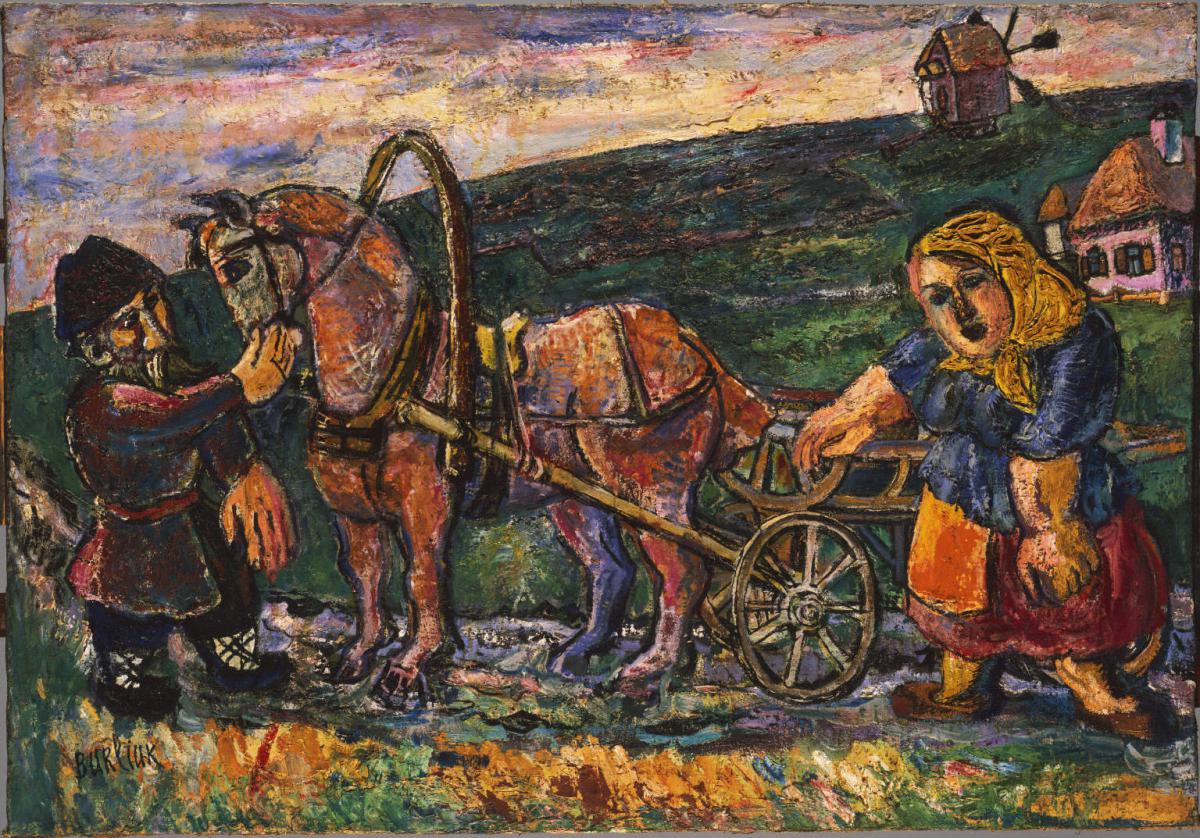On the Road
David Burliuk ( c. 1920 )

On the Road is one of Burliuk’s most memorable canvases. Its uncluttered composition, focusing on a peasant couple leading a horse and wagon down a road, provides a basic appeal to human emotion rather than to the intellect.
The painting derived from Burliuk’s investigations of neo-primitivism, a style he explored between 1905 and 1911, and sought to make art that was easily accessible to ordinary people and stripped their paintings of specific narratives, moralistic lessons, and illusory effects. Subjects were shown in a naive, child-like manner, reminiscent of folk art. Burliuk, like other neo-primitivists, used intense color, distorted human proportions, and kept the important details near the picture plane. However, he eschewed the flat areas of color favored by the group, squeezing paint directly from the tube to energize the surface.
Though intermittent, the thick, highly textured impasto is forceful. Burliuk believed that tactile effects, and the visual sensations derived from them, were major components in the expressiveness of a picture. As he explained in his article “Surfaceology,” a broad range of textures should be explored: “Visual topography is the appreciation of paintings from the point of view of the characteristics of their surfaces. The surfaces of my paintings are: laminated, soft, glossy, glassy … flat and dull, smooth, even and mossy, dead, sandy … mountainous, rocky, crateriformed [sic], thorny, prickly, camel-backed, et cetera. In my works you find every kind of a surface one is able to imagine or to meet in the labrinths [sic] of life.” The coarse burlap of On the Road, visible in some areas, is totally obscured elsewhere. Impasto is wildly uneven, permanently warping the picture’s surface and enhancing the scene’s energy.
The heaviness of the paint suggests the enormity of the peasants’ burden and helps to underscore their ties to the earth. The highest area of impasto, built up of wax and paint and jutting out several inches from the surface, appears near the windmill in the background, to the right. As a result, this area is a looming presence, a source of tension that is not dependent on the imagery. Yet the complex swirls of paint and exuberant surfaces of color convey the boundless energy and resiliency of the land and those who live off of it. Duncan Phillips realized how essential Burliuk’s style was in conveying meaning in the painting: “The artist in his passion about his subject must symbolize the massive, overhanging meaning of The Soil for those who toil in it. To do this he builds out from the surface of his canvas in great mounds, tempting our hands to feel its roughness. The colors of this fascinating picture are like a song of elementary pride and joy in elemental things.”